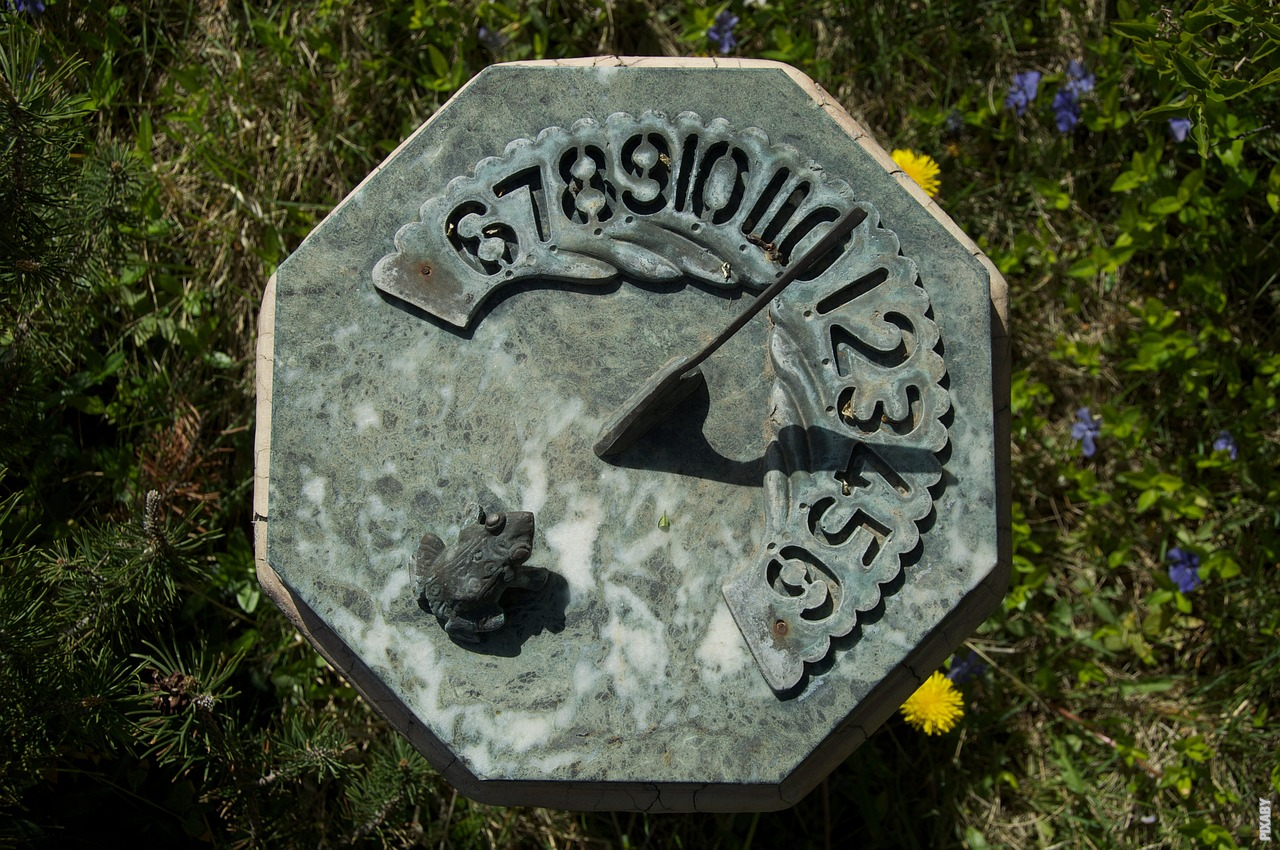The Timeless Wonder of Sundials
Sundials have been used for centuries as a way to tell time based on the position of the sun. These ancient timekeeping devices are not only functional but also fascinating in their design and operation.
Harnessing the Power of the Sun
A sundial works by utilizing the sun’s position in the sky and casting a shadow onto a marked surface. The device consists of a flat plate, called the dial, with a raised piece called a gnomon that acts as the indicator. As the sun moves across the sky, the shadow cast by the gnomon changes position, allowing the observer to determine the time.
The Anatomy of a Sundial
Sundials come in various shapes and sizes, but they all follow the same basic principles. The dial is typically marked with hours and sometimes divided into smaller increments for increased accuracy. The gnomon, positioned at a specific angle, casts a shadow that aligns with the hour markers. The angle of the gnomon is crucial in determining the accuracy of the sundial.
Calculating Time with Precision
While sundials are relatively simple in design, their accuracy can be affected by several factors. The position of the sun, influenced by the Earth’s rotation and its tilt, changes throughout the year. Therefore, sundials need to be adjusted for different latitudes and times of the year. Additionally, the gnomon’s angle must be set according to the geographical location to ensure precise timekeeping.
A Journey through Time
Before the invention of mechanical clocks, sundials were the primary method of timekeeping. They were found in various forms across different cultures, each incorporating unique artistic elements. From the obelisks of ancient Egypt to the intricate stone sundials of the Mayans, these time-telling devices offer a glimpse into the history and culture of civilizations long gone.
Post
Post
Sundials Today
In the modern world, sundials are still appreciated for their aesthetic appeal and symbolic meaning. They can be found in parks, gardens, and historical sites, serving as both decorative elements and reminders of our connection to the natural world. While they may not be as accurate as atomic clocks or smartphones, sundials continue to capture our imagination and remind us of the beauty of the sun’s journey across the sky.
A Timeless Reminder
So, the next time you come across a sundial, take a moment to appreciate its intricate design and the ancient wisdom it represents. As the shadow moves along the dial, remember that it is not just telling time but also connecting you to a tradition that spans centuries. The sun may set and rise again, but the magic of the sundial remains eternal.



